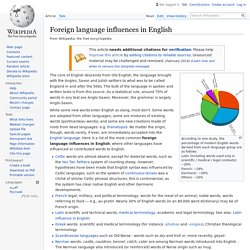

Cambridge app maps decline in regional diversity of English dialects. The English Dialects App (free for Android and iOS) was launched in January 2016 and has been downloaded more than 70,000 times.

To date, more than 30,000 people from over 4,000 locations around the UK have provided results on how certain words and colloquialisms are pronounced. A new, updated version of the app – which attempts to guess where you’re from at the end of the quiz – is available for download from this week. Based on the huge new dataset of results, researchers at Cambridge, along with colleagues at the universities of Bern and Zurich, have been able to map the spread, evolution or decline of certain words and colloquialisms compared to results from the original survey of dialect speakers in 313 localities carried out in the 1950s.
Professor David Britain from the University of Bern added: “People in Bristol speak much more similarly to those in Colchester now than they did fifty years ago. Regional differences are disappearing, some quite quickly. 1 of 5. How to do an Irish Accent. Can Irish People Speak Irish? (Gaeilge or Gaelic) // Clisare. How language shapes the way we think. Stumbleupon. English is the language of Shakespeare and the language of Chaucer.

It’s spoken in dozens of countries around the world, from the United States to a tiny island named Tristan da Cunha. It reflects the influences of centuries of international exchange, including conquest and colonization, from the Vikings through the 21st century. Here are 25 maps and charts that explain how English got started and evolved into the differently accented languages spoken today. The origins of English 1) Where English comes from English, like more than 400 other languages, is part of the Indo-European language family, sharing common roots not just with German and French but with Russian, Hindi, Punjabi, and Persian. 2) Where Indo-European languages are spoken in Europe today Saying that English is Indo-European, though, doesn’t really narrow it down much. 3) The Anglo-Saxon migration.
History of the English Language by Nikki Morrell on Prezi. The History of English in 10 Minutes. Shakespeare: Original pronunciation. Global English with David Crystal. Foster's English Shorts: The Dark Side - UR Skola. Världens språk: Globish - UR Skola. The Canterbury Tales Prologue in Middle English. Origins of English PieChart - Foreign language influences in English - Wikipedia. According to one study, the percentage of modern English words derived from each language group are as follows: Latin (including words used only in scientific / medical / legal contexts): ~29% French: ~29% Germanic: ~26% Others: ~16% The core of English descends from Old English, the language brought with the Angles, Saxon and Jutish settlers to what was to be called England in and after the 500s.

The bulk of the language in spoken and written texts is from this source. As a statistical rule, around 70% of words in any text are Anglo-Saxon. Moreover, the grammar is largely Anglo-Saxon. While some new words enter English as slang, most don't. Counting[edit] Cardinal numbering in English follows two models, Germanic and Italic. Standard English, especially in very conservative formal contexts, continued to use native Germanic style as late as World War I for intermediate numbers greater than 20, viz. See also[edit] Linguistic purism in English Further reading[edit] Pyles, T. & J. History of English. Foreign language influences in English - Wikipedia. According to one study, the percentage of modern English words derived from each language group are as follows: Latin (including words used only in scientific / medical / legal contexts): ~29% French: ~29% Germanic: ~26% Others: ~16% The core of English descends from Old English, the language brought with the Angles, Saxon and Jutish settlers to what was to be called England in and after the 500s.

The bulk of the language in spoken and written texts is from this source. As a statistical rule, around 70% of words in any text are Anglo-Saxon. Moreover, the grammar is largely Anglo-Saxon. While some new words enter English as slang, most don't. Counting[edit] Cardinal numbering in English follows two models, Germanic and Italic. Standard English, especially in very conservative formal contexts, continued to use native Germanic style as late as World War I for intermediate numbers greater than 20, viz.
See also[edit] Linguistic purism in English Further reading[edit] Pyles, T. & J.